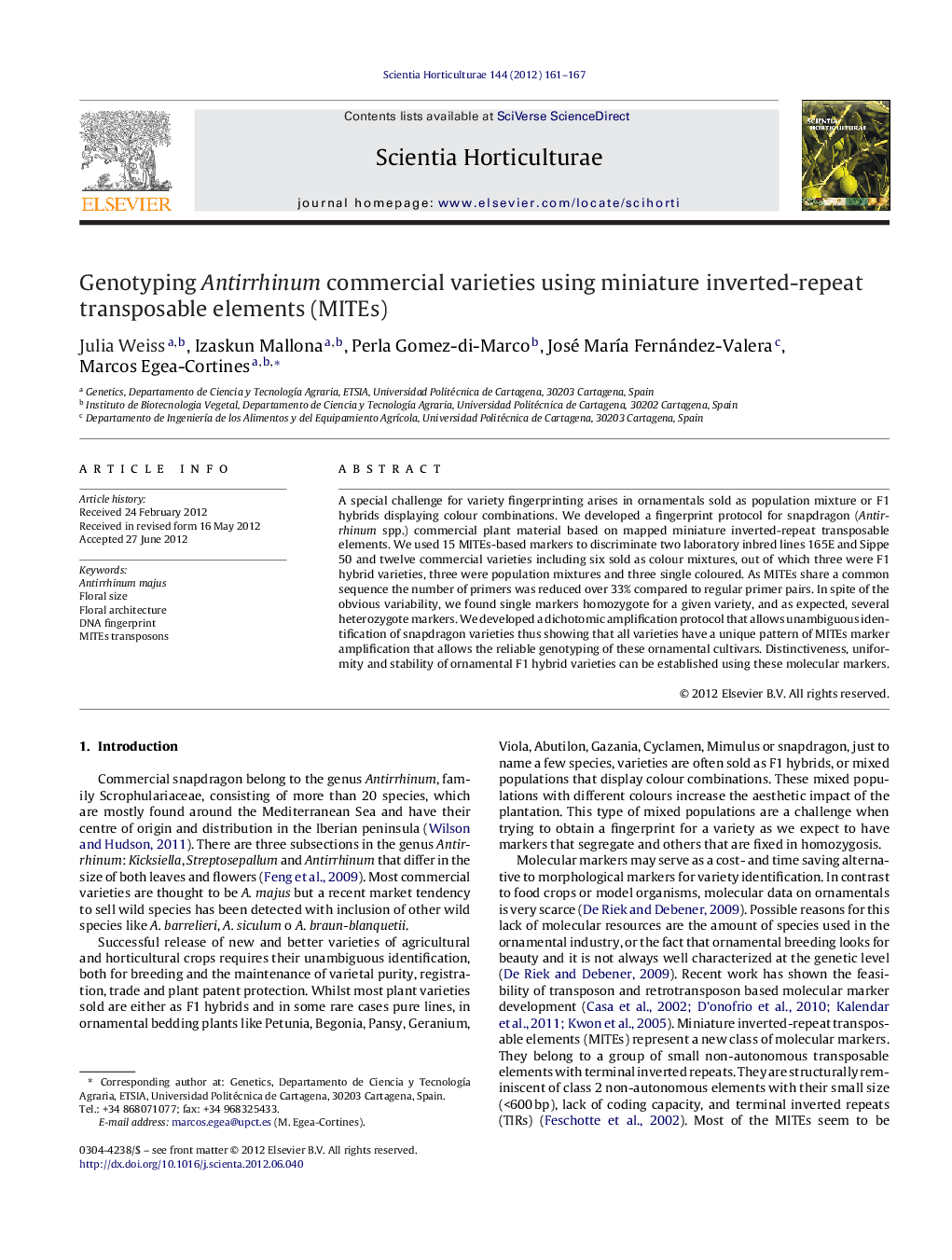| Article ID | Journal | Published Year | Pages | File Type |
|---|---|---|---|---|
| 6407599 | Scientia Horticulturae | 2012 | 7 Pages |
A special challenge for variety fingerprinting arises in ornamentals sold as population mixture or F1 hybrids displaying colour combinations. We developed a fingerprint protocol for snapdragon (Antirrhinum spp.) commercial plant material based on mapped miniature inverted-repeat transposable elements. We used 15 MITEs-based markers to discriminate two laboratory inbred lines 165E and Sippe 50 and twelve commercial varieties including six sold as colour mixtures, out of which three were F1 hybrid varieties, three were population mixtures and three single coloured. As MITEs share a common sequence the number of primers was reduced over 33% compared to regular primer pairs. In spite of the obvious variability, we found single markers homozygote for a given variety, and as expected, several heterozygote markers. We developed a dichotomic amplification protocol that allows unambiguous identification of snapdragon varieties thus showing that all varieties have a unique pattern of MITEs marker amplification that allows the reliable genotyping of these ornamental cultivars. Distinctiveness, uniformity and stability of ornamental F1 hybrid varieties can be established using these molecular markers.
⺠Many ornamental plants are sold as colour combinations. ⺠This represents a challenge for fingerprinting varieties comprising several colours. ⺠We developed a protocol based on miniature inverted-repeat transposable elements. ⺠Common and specific primer combinations allow low-cost fingerprinting. ⺠Sequence information on transposons is enough to develop markers in a short period of time.
